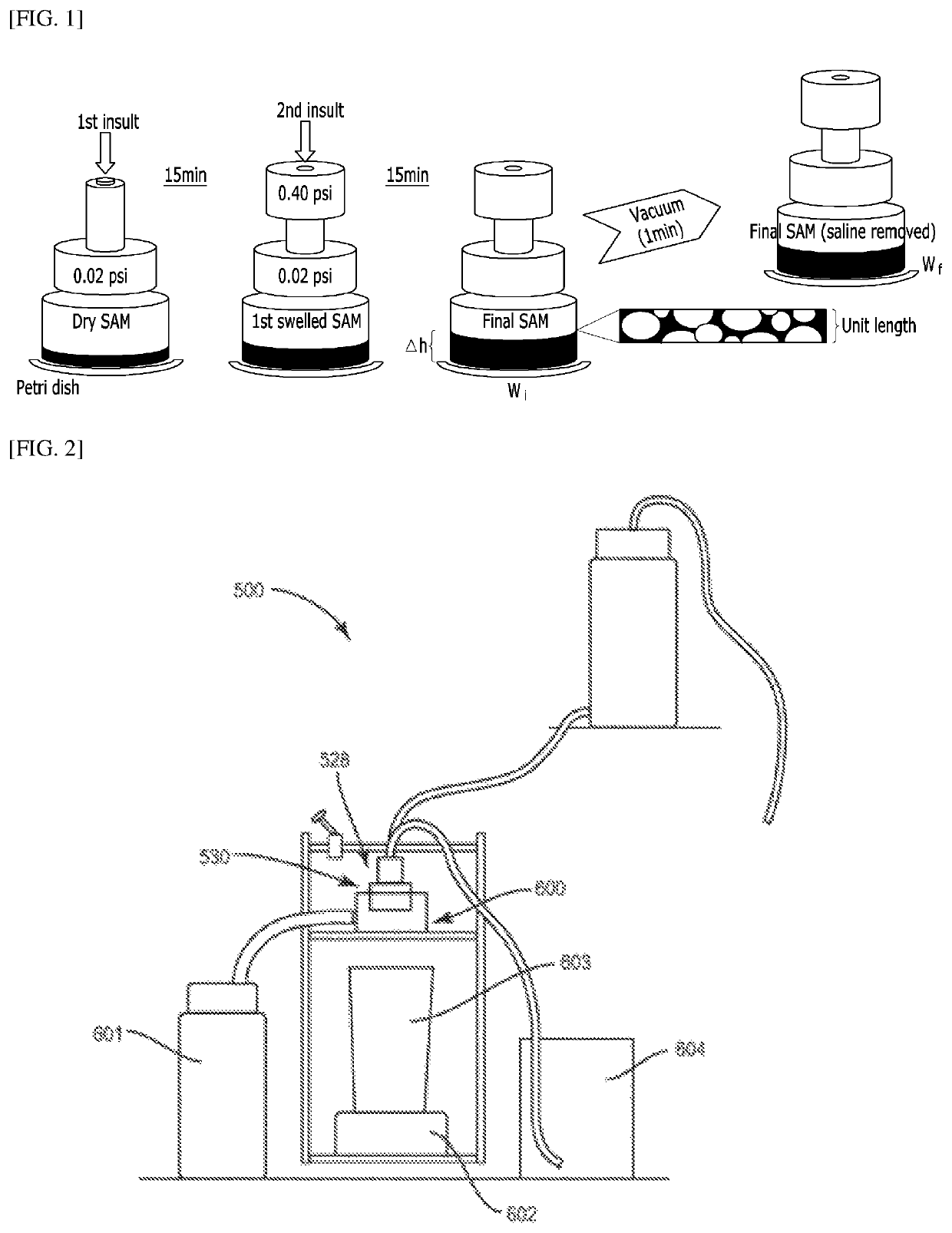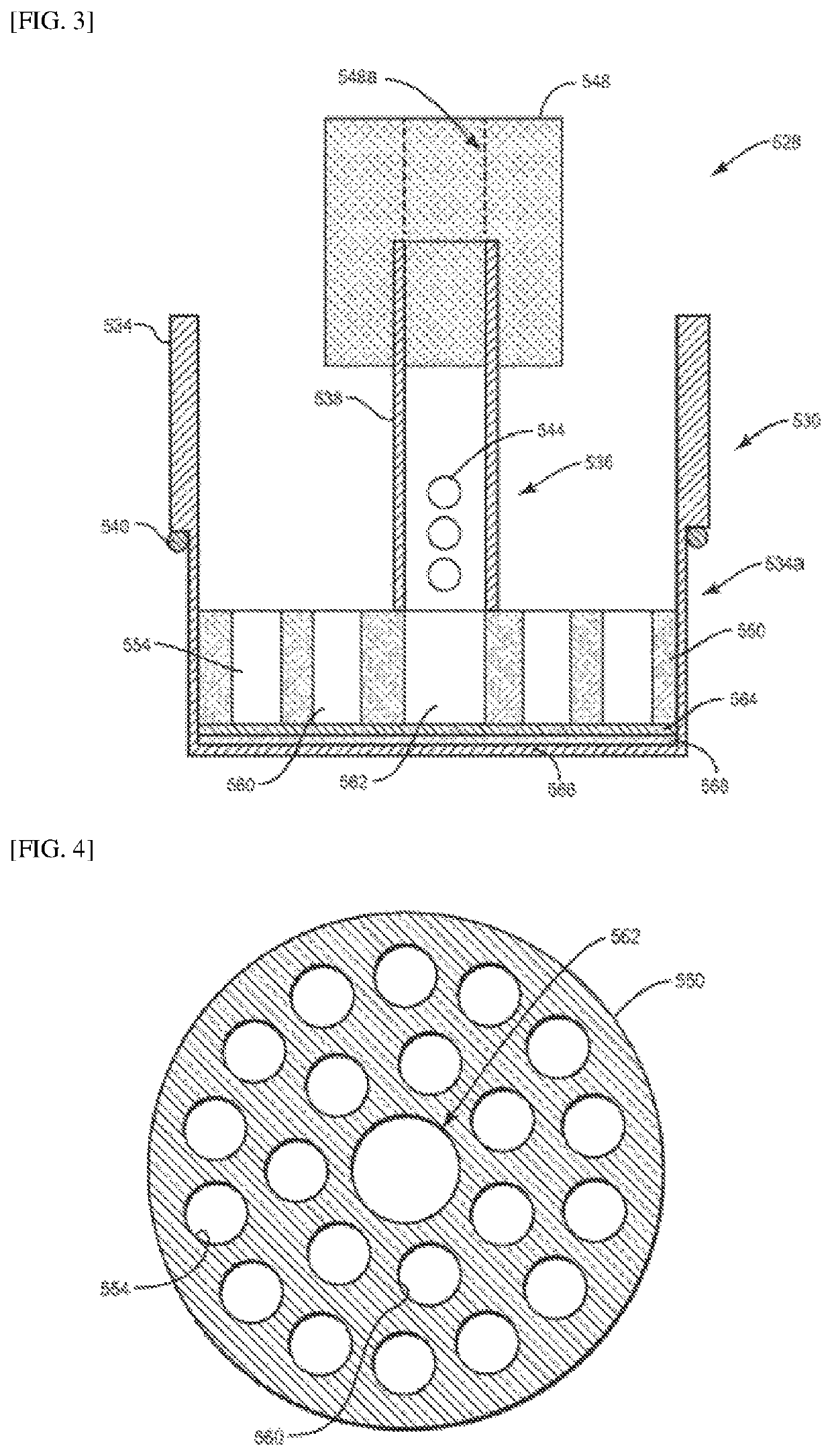Superabsorbent polymer and preparation method thereof
a superabsorbent polymer and polymer technology, applied in the field of superabsorbent polymer, can solve the problems of reducing the absorbency under load, the difficulty of improving the centrifuge retention capacity (crc), and the limitation of providing superabsorbent polymers, so as to prevent the effect of rewetting
- Summary
- Abstract
- Description
- Claims
- Application Information
AI Technical Summary
Benefits of technology
Problems solved by technology
Method used
Image
Examples
example 1
on of Superabsorbent Polymer
[0132]To a glass reactor, 500 g of acrylic acid, 1.5 g of polyethyleneglycol diacrylate (PEGDA, a molecular weight of 400), 0.5 g of trimethylolpropane triacrylate containing 9 mol % of ethylene oxide (Ethoxylated-TMPTA, TMP(EO)9TA, M-3190 Miwon Specialty Chemical Co., Ltd.), and 0.4 g of IRGACURE 819 were injected. In this regard, a total weight of the used non-neutralized acrylic acid was 500 g, and a total weight of the internal crosslinking agent was 2 g. Thus, the internal crosslinking agent was used in an amount of 0.4 parts by weight with respect to 100 parts by weight of the non-neutralized acrylic acid.
[0133]To the glass reactor, 0.05 g of sodium dodecyl sulfate as a surfactant was added and mixed, and then 800 g of a 24% caustic soda solution was slowly added dropwise and mixed. After confirming that the temperature of the mixed solution increased to about 72° C. or higher by neutralization heat upon adding dropwise the caustic soda solution, th...
example 2
on of Superabsorbent Polymer
[0139]A surface-crosslinked superabsorbent polymer was prepared in the same manner as in Example 1, except that after reaching the maximum reaction temperature, the surface-crosslinking reaction was further allowed for 30 min in the surface-crosslinking process of Example 1.
experimental example 1
es of Superabsorbent Polymers
[0143]Properties of the base resins and the superabsorbent polymers prepared according to Examples and Comparative Examples were evaluated by the following methods, and shown in the following Table 1.
[0144](1) Centrifuge Retention Capacity (CRC)
[0145]Centrifuge retention capacity (CRC) in a physiological saline solution was measured for the base resins and the superabsorbent polymers of Examples and Comparative Examples in accordance with EDANA method WSP 241.2.
[0146]In detail, among the base resins and the superabsorbent polymers to be tested for centrifuge retention capacity, those having a particle size of 150 μm to 850 μm, which were passed through a US standard 20 mesh screen and retained on a US standard 100 mesh screen, were prepared as samples.
[0147]The sample W0 (g, about 0.2 g) having a particle size of 150 μm to 850 μm was uniformly placed into a non-woven fabric bag, followed by sealing. Then, the bag was immersed into 0.9% by weight of a phy...
PUM
| Property | Measurement | Unit |
|---|---|---|
| thickness | aaaaa | aaaaa |
| diameter | aaaaa | aaaaa |
| vortex time | aaaaa | aaaaa |
Abstract
Description
Claims
Application Information
 Login to View More
Login to View More - R&D
- Intellectual Property
- Life Sciences
- Materials
- Tech Scout
- Unparalleled Data Quality
- Higher Quality Content
- 60% Fewer Hallucinations
Browse by: Latest US Patents, China's latest patents, Technical Efficacy Thesaurus, Application Domain, Technology Topic, Popular Technical Reports.
© 2025 PatSnap. All rights reserved.Legal|Privacy policy|Modern Slavery Act Transparency Statement|Sitemap|About US| Contact US: help@patsnap.com


